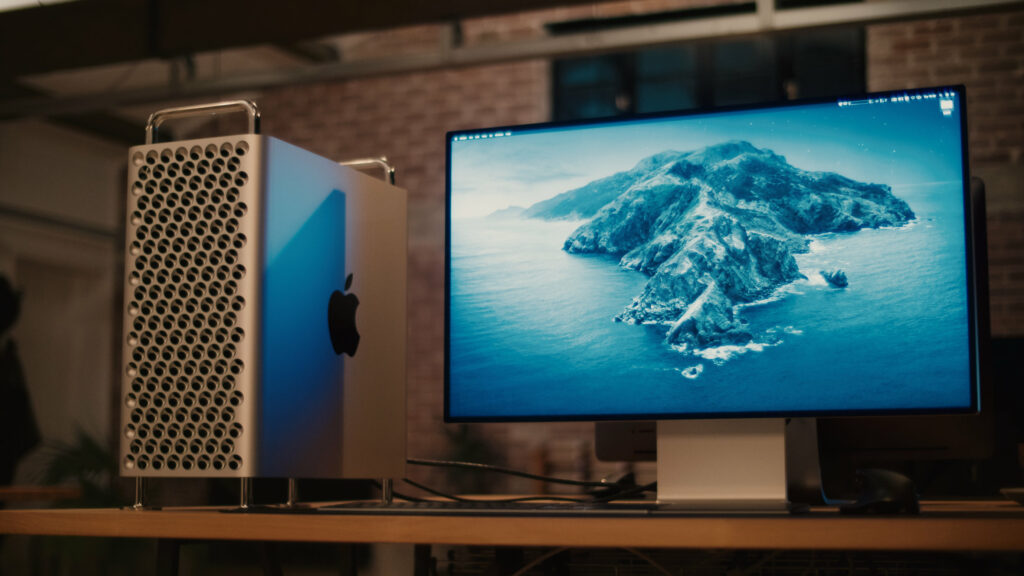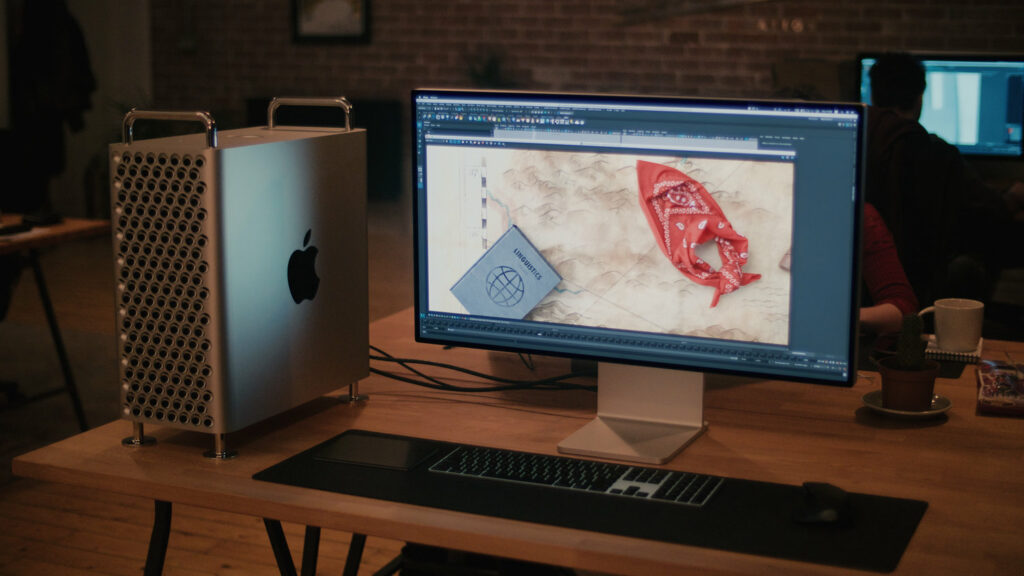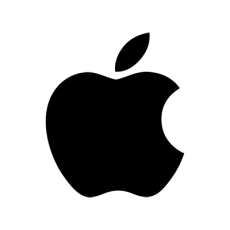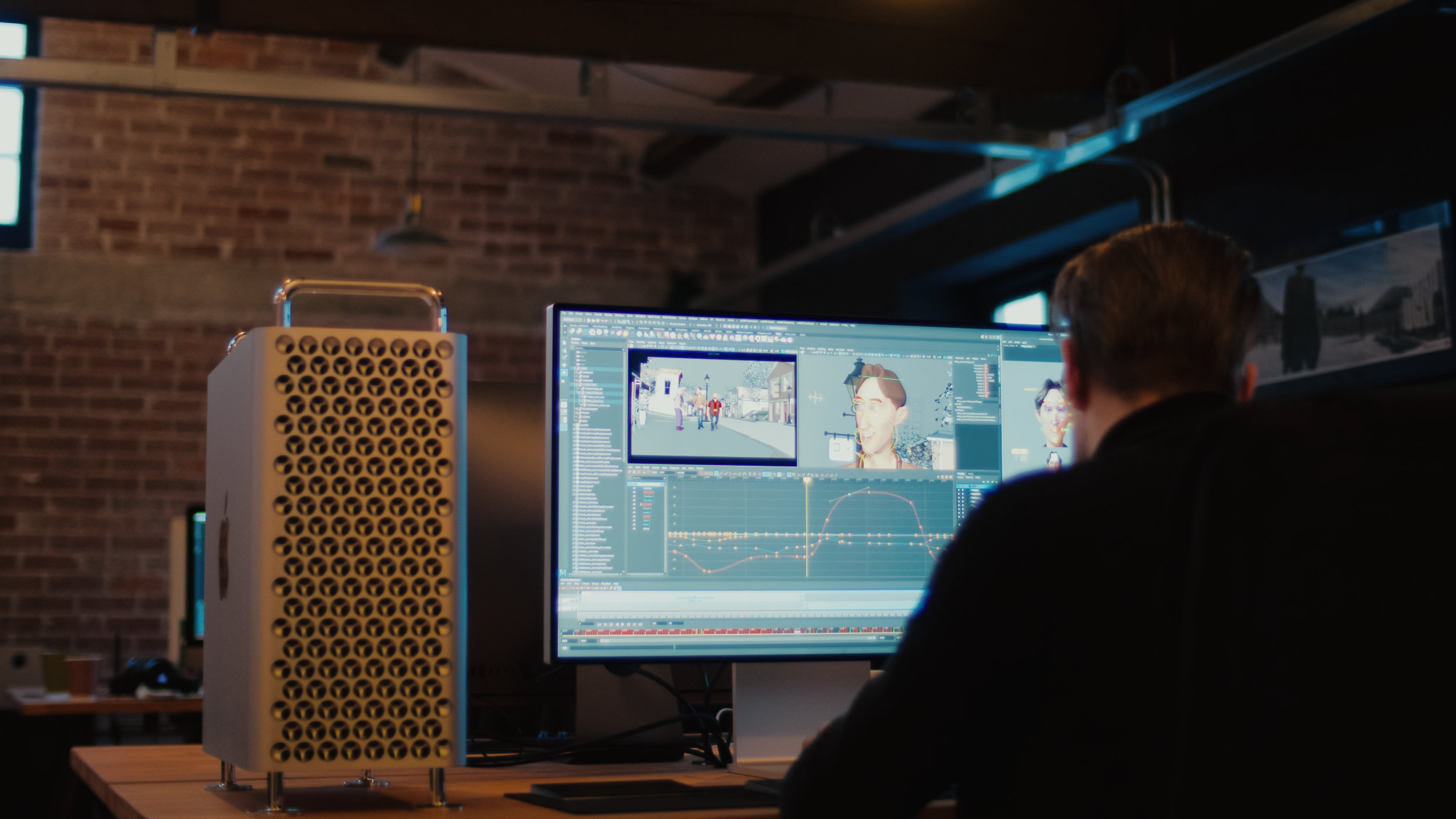The Mac Pro is Apple’s most powerful machine, but also its most expensive. A year after its release, the computer still puzzles the general public: who could need such a machine?
€ 6,499 is the floor price of an Apple Mac Pro. Its wheels cost 500 €. The pro Display XDR, in the same range, costs € 5,499. Its foot costs € 1,099. Tariffs which, when Apple revealed them, rightly made the general public jump, which is the main target of the products marketed by the company of Tim Cook. But one detail should have immediately come to mind: Pro. Because in a professional world, where every minute saved and where parameters ranging from employee comfort to standardized standards for an entire industry matter a lot, the price of devices is less of an issue.
So it is true that Apple may have taken to its own game: an iPad Pro is not a professional tool – it is simply the best of the brand’s touch pads, which will suit an individual as well. Following this logic, an iPhone 12 Pro is still less pro: this is the iPhone with the most advanced technical characteristics. And we could even push the reflection to the MacBook Pro : it is a tool that will suit the vast majority of professionals, but which, at € 1,499, can also be a high-end consumer product.
It is therefore the price of the machines which, at Apple, gives an indication of the target audience – and leads to different technical choices, from total configurable RAM to modular expansion cards, including overpowered processors or adapted screens. at work for TV and cinema.
A Mac Pro is most likely not for you. A Pro Display XDR either. So who are these components really for?

Where does the Mac Pro shine?
December 23, 2019One of those companies that showed early interest in the Mac Pro and its associated display was Lunar Animation, a 3D design studio. About a year later, the English studio publish a long post, sort of looking back on a year’s experience with this very high-end material – with, as a bonus, reflections on a health crisis that has brought most designers home. In order to understand what matters when choosing to acquire material that seems unattainable to many, we caught up with James Rodgers, founder and creative director of the studio.
To fully appreciate the business profile that Lunar Animation is, you have to understand the projects it is working on. Most of the time, it is about making 3D animation, for advertising, television or cinema. As many universes which have their codes, their formats and their very precise requirements, and each employee is brought to work in precise frameworks on ten software programs. The smallest export of a video file is, for the most part, handled by server farms which are far more efficient than the more powerful personal computers.
The latest creations of Lunar Animation for Disney + allow you to realize the level of detail of the animations created:
The first video is particularly striking, as Roger studio explains it, who directed the creation: the city that is rendered in 3D in the short scene is teeming with details and references borrowed from the Disney universes. Each centimeter on the screen is a scene in itself, each scene has dynamic objects (humans, balloons, cars, etc.) which are as many polygons which must respond to numerous plays of light and shadows, while moving. Exporting a simple video file from a 50 GB project to a stunning consumer Mac M1 took about ten minutes. We let you imagine the hours it takes to export these animated pixels, even over 30 seconds.
This is precisely what James Rodgers tells us straight away: for a studio like his, speed of execution matters. We see it on two levels, continues the creative director: “ for export, but also and above all during the work of designers “. And this is where the raw power of a Mac Pro is essential: it allows, unlike the iMac Pro they replace, to work on several 3D software, linked together, at the same time. To get an idea of such work and the resources it takes to manage so many polygons in real time, Lunar Animation has published another video:
Therefore, for James Rodgers “ the cost of a machine is not really a question Because the greatest value of the business, and also the greatest expense, are the people who work on it. ” The worst situation for me would be wasting time for my designers », He confides to us.
The power of the home office
An observation which, he admits, has been accentuated with teleworking due to covid: at home, his employees need powerful and autonomous machines, because otherwise their productivity depends on their connection to the Internet used for send the files to the studio for rendering by machines on site. And as everyone has discovered since 2020 and forced telecommuting, connecting to the internet is the thing a telecommuting employee or employer has the least leverage over.
« One of my motion designers brought one of our Mac Pro home », Says James Rodgers, in order to have a machine powerful enough to allow him to work efficiently without going through the studio box. ” We have the impression of working on several computers with a Mac Pro », He comments, recalling a situation lived before the release of the machine, where another of his employees had asked him for a second iMac Pro in order to be able to continue working when the first started rowing because of a operation that is too resource intensive. In terms of design, the two computers have indeed nothing to do: any Pro be it, the iMac, in All-in-One format, does not have the same performance at all in practice.


Doing more on a single object is also well illustrated by the use by Lunar Studio in this context of a 5K screen (that of the iMac Pro) compared to a 6K screen (the Pro Display XDR), the everything must meet strict color standards. We see that the designer is able to display a new preview module on the screen, saving a round trip on several windows. Or an office with multiple screens.
It is therefore quite clear that the subject of the relevance of Apple’s professional computer lines is only one for those who do not use them. Or, to put it another way, professionals who know they need a Mac Pro are fully aware of their needs and the versatility of the tool. And for good reason: these ranges could almost not appear in the general public catalog, as they are not adapted to its uses, its needs and its problems. But in a world where a TB of RAM is a figure that does not seem overdone (Lunar is limited to 384 GB …), the overpowering Mac Pro has perfectly found its place as a benchmark machine, which at the same time saves time. , comfort and space.


Who’s who


–
–
–
Share on social media
–
The continuation in video
–


